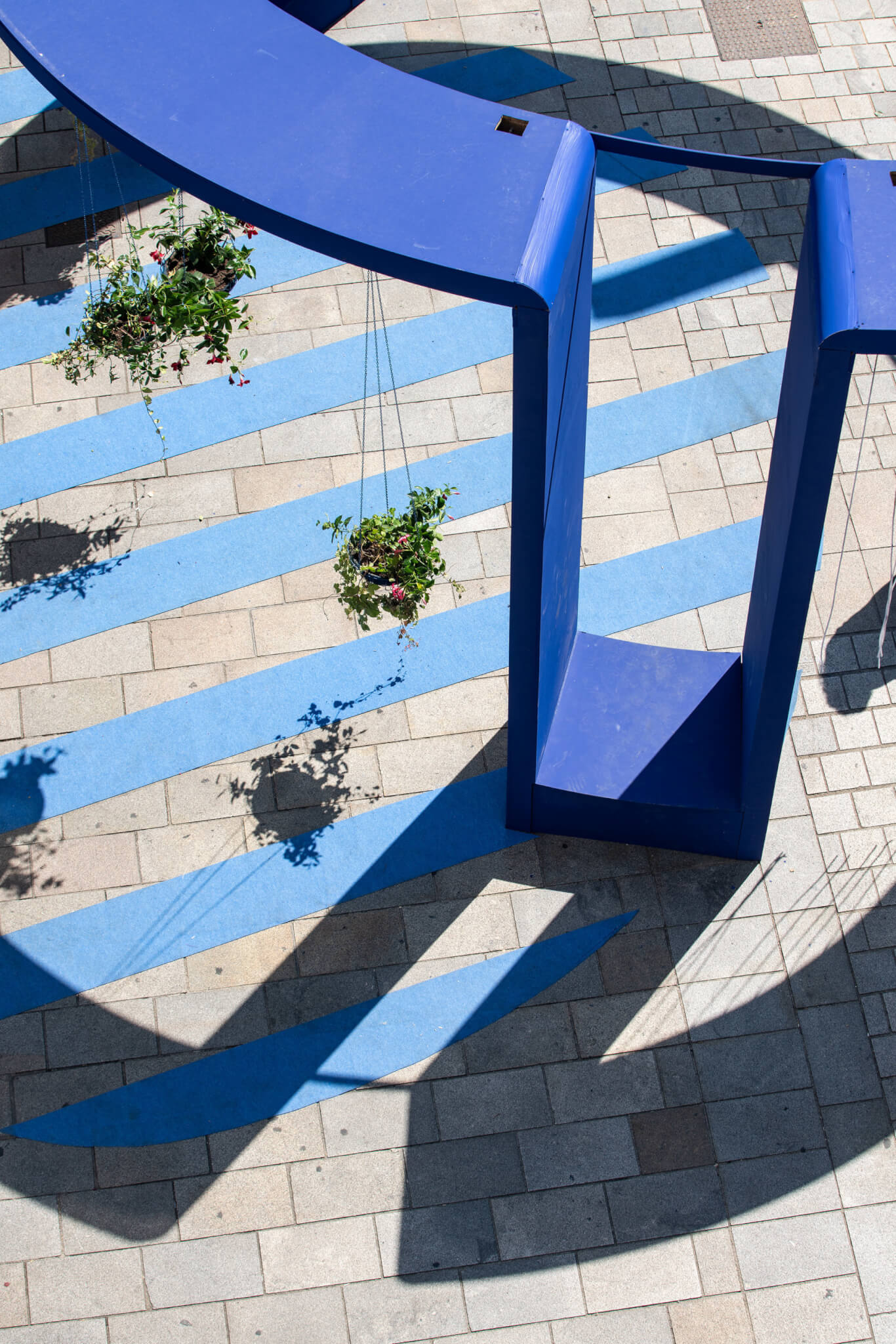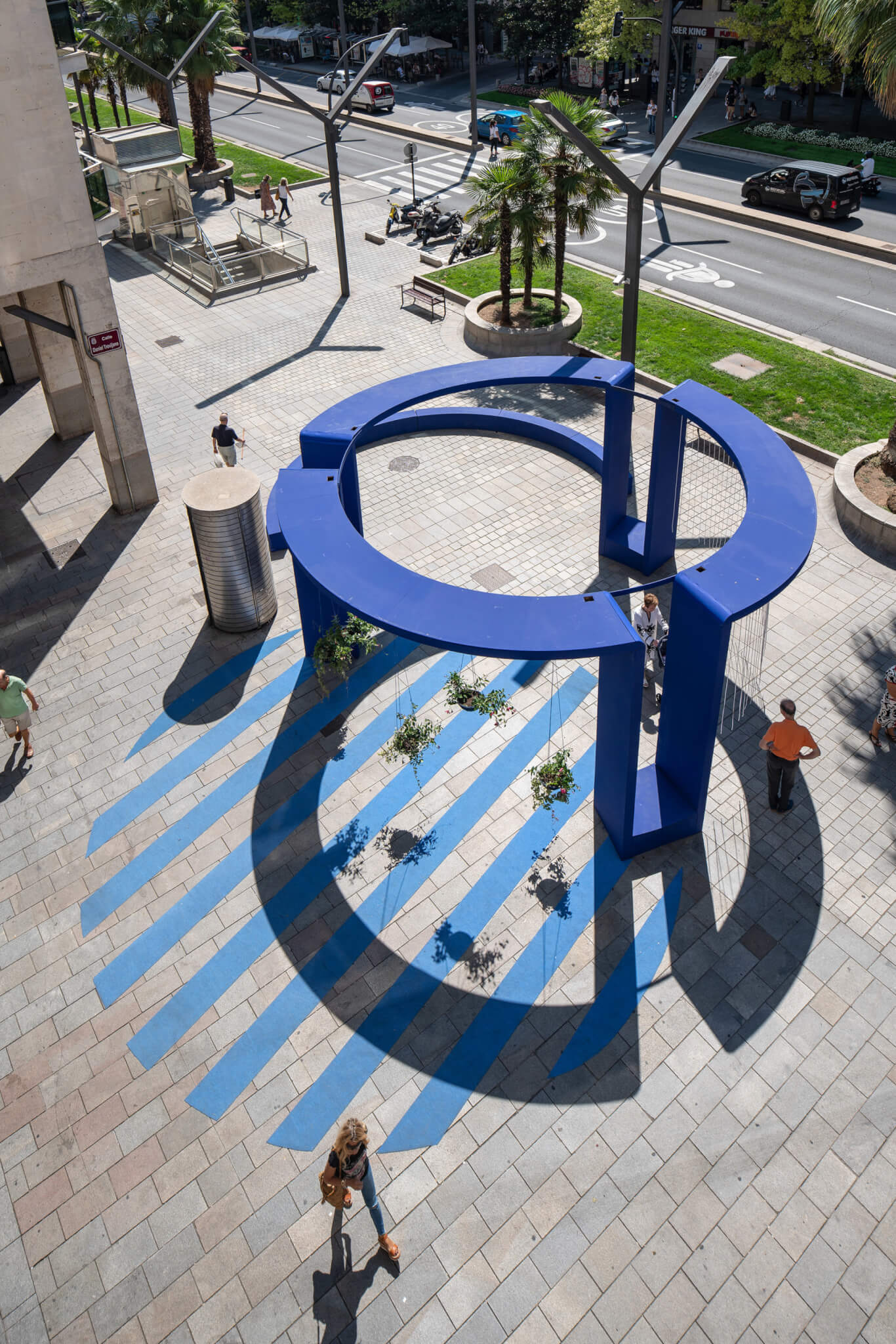Early this month, the Spanish city of Logroño hosted the eighth edition of its annual architecture and design festival known as Concéntrico. Nestled along the Ebro River in northern Spain’s wine-famous Rioja province, the city has hosted 91 ephemeral installations and 42 exhibitions and talks during the run of the festival’s seven previous iterations.
This year, Concéntrico showcased another batch of jury-selected urban interventions from an impressive cohort of international designers and artists including, among others, Associates Architecture (Italy), Tableau (Denmark), SKULL Studio (Czechia), Rintala Eggertsson Architects (Norway), Konstantin Grcic (Germany), BudCud (Poland), Yemail Arquitectura (Colombia), Matali Crasset (France), and Miami (via Chicago)’s very own Germane Barnes, an architect and educator who serves as founding principal of multi-disciplinary design practice Studio Barnes.

For Concéntrico 08, Barnes, 2021 recipient of the Harvard GSD’s Wheelwright Prize and a 2021–2022 Rome Prize fellow, conceived Intersect, a pop-up play pavilion in the heart of Logroño that invited passersby to engage with the surrounding urban environment as one big theater. MAS Context, a Chicago-based nonprofit led by architect, editor, and curator Iker Gil, supported the installation. Gil, a native of Bilbao, also served on the jury of Concéntrico 08.
Intersect took its name from the playscape’s three roughly 30-foot-diameter “land circles” converging at a 15-foot-tall wooden superstructure to create a “zone of occupation for individuals which reference different components of a theater.” The installation’s location at the intersection of Gran Via and Daniel Trevijano Street, “at the actual crossing of major sidewalks,” was meant to “reinforce the idea of the city as a theatre to be celebrated,” detailed a description of the work.
Dubbed the Stage, Intersect’s first circular zone was envisioned by Barnes as an open-air arena of sorts for theatrical (or not-so-theatrical) modes of expression illuminated by solar-powered lights affixed to the underside of the structure. Spectators could sit and rest on modular seating created by the arc of the ground circle. The second zone was the Garden, which featured five circular, plant-filled baskets suspended from the superstructure.

Finally, there was the Curtain, a crowd-pleaser comprised of thin threads encircling a segment of the installation. While the Curtain held obvious appeal to frolicking younger users, the thrill of making a dramatic public entrance—i.e. parting and then sashaying through—a long, dangling portière never really gets old.
Concéntrico 08 ran from September 1–6. As noted by the festival organizers, the latest edition expanded its “usual focus to explore new urban practices: locations that emerge from constant listening to continue to raise debates that look at the city itself.”
On the topic of people and objects coming together, Barnes is also a featured participant in INTERSECTIONS: Where Diversity, Equity and Design Meet, a forthcoming series of talks and workshops held at the National Building Museum in Washington, D.C. Barnes will be on hand the evening of November 10 to lead a discussion and present a screening of his award-winning short film You Can Always Come Home. More info about that event and the rest of the series can be found here.

















